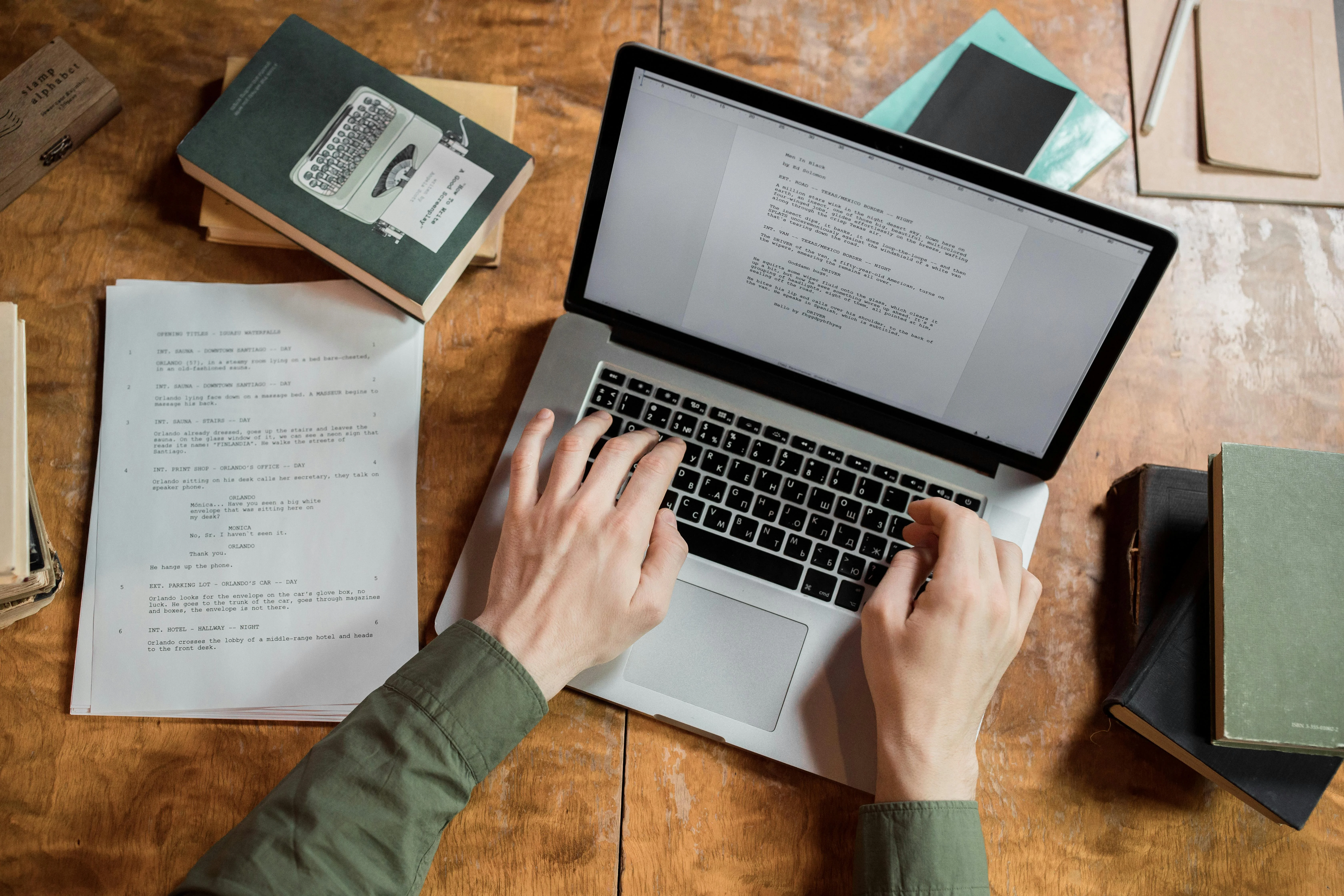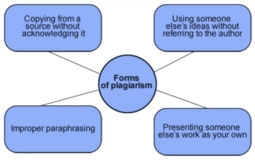In a world where knowledge is readily shared, comprehending how to avoid plagiarism is crucial for students, professionals, and content creators. Plagiarism—using someone else's ideas or words without credit—is prevalent in academic and professional settings. It destroys reputations, impairs productivity, and frequently has serious effects, whether intended or not.
Learning how to avoid plagiarism in your writing protects your reputation and improves your research and analysis abilities. This tutorial discusses plagiarism and provides practical, well-researched techniques to avoid plagiarism while maintaining originality and honoring intellectual property.
What is plagiarism?
At its heart, plagiarism includes taking someone else's work without permission or recognition and presenting it as one's own. Copying passages verbatim or paraphrasing without citing sources is plagiarism. Lack of originality and misrepresenting someone else's work as personal property define plagiarism. Knowing the difference between original and stolen content is essential to understanding how to avoid plagiarism. Even accidental plagiarism—miscitations or misunderstandings—is taken seriously in academic and professional settings. Institutions promote autonomous thought by elevating uniqueness, where each person adds distinct insights rather than replicating ideas. Thus, avoiding plagiarism is more than a technical need; it is a way of honoring others' work and upholding ethical norms in all forms of communication.
Since plagiarism involves outright copying and poor paraphrasing, its symptoms might be subtle. Even if you follow a source's structure or logic, failing to properly convert or cite it is plagiarism. Plagiarism can range from wholesale copying to "mosaic plagiarism" when samples from different sources are combined without citations. Also, ways to avoid plagiarism in your writing include cautious paraphrasing and citing different and linked information. Knowing these subtleties helps people avoid plagiarism, establish their voice, and improve their field.
Why should you avoid plagiarism?
There are compelling reasons to avoid plagiarism in any work or communication. First, avoiding plagiarism protects personal and professional reputations. Plagiarism can result in failing grades, legal troubles, job loss, or professional harm. Ethically, avoiding plagiarism means respecting others' intellectual property rights and acknowledging their efforts, promoting honesty and respect. In academia and the workplace, originality is valued, and plagiarism is frowned upon since it damages credibility. One safeguards one's work and professional standards by understanding how to avoid plagiarism.
Avoiding plagiarism improves critical thinking and analysis. Readers interact more deeply after learning to avoid plagiarism in writing, allowing for true knowledge and fresh thoughts. Readers benefit from new viewpoints and ideas rather than rehashed stuff. As information becomes more available, being aware of how to prevent plagiarism becomes essential for retaining quality, reliability, and originality in any work.
Avoiding plagiarism boosts creativity and self-expression. People acquire a distinct voice when they study a topic and create their thoughts. Writers and professionals may establish a personal brand representing their knowledge and integrity, making their work more relevant and memorable.
Also, it encourages intellectual growth and learning. Instead of copying, critical thinking helps one assimilate knowledge, ask insightful questions, and contribute to debates. Learning and producing independently boosts confidence by making one more comfortable expressing creative ideas.
So, avoiding plagiarism builds trust and respect in a collaborative environment. Team members can give unique ideas when everyone appreciates originality, which may lead to more inventive solutions. Thus, plagiarism-free work improves individual growth, group dynamics, and collective work quality.
5 ways to avoid plagiarism
Creating original, well-sourced content involves several strategies to ensure authenticity and respect for others' work. Here are five practical ways to avoid plagiarism in your writing that emphasize originality and accuracy. Each technique offers a structured approach to using sources ethically while avoiding the pitfalls of copied material.
Use quotation marks for direct quotes
Using quotation marks for precise words from another source is one of the easiest methods to avoid plagiarism. Quotation marks show readers which words and phrases belong to others. It credits the original author and distinguishes your analysis or thoughts from supplied content, making your work more transparent and believable. A typical kind of plagiarism is the misuse or omission of quote marks, which might cause readers to believe all writing is yours. Readers may quickly find the source by citing the author, publication year, and page number after each quoted part.
If a source states, “The importance of maintaining academic integrity cannot be overstated,” copying it without quotations constitutes plagiarism. The quotation “The importance of maintaining academic integrity cannot be overstated” (Author, Year) is formatted correctly for clarity and acknowledgment.
Paraphrase effectively
Paraphrasing is a complex approach to avoid plagiarism and show your knowledge. Paraphrasing correctly lets you express the original concept in your own words without imitating the author's style or sentence structure. Effective paraphrasing involves rewriting concepts, not merely replacing words with synonyms. Poor paraphrasing—where sentences resemble the original—is still plagiarism. True paraphrasing reshapes essential concepts to fit your story.
Moreover, to help you with paraphrasing, you can also consider using writing services, which offer a reliable way to avoid plagiarism. Resources like paper writing service reviews can help you find the best assistance.
If an original text says, “Plagiarism undermines the trust between educators and students and damages the integrity of academic institutions,” a bad paraphrase would say, “Plagiarism breaks the trust between teachers and students and harms academic integrity.” Its rephrase is too similar. Better: “Engaging in plagiarism can erode the foundational trust within educational settings, ultimately affecting the reputation and ethics of the institution.” Rephrasing and referencing the source lets you offer an informed opinion without infringing on others' work. Paraphrasing to avoid plagiarism improves writing authenticity and depth.
Cite all sources accurately
Citing sources properly is essential in academic and professional writing to avoid plagiarism. Every quotation, paraphrase, statistic, and data point from another author must be cited. Citations are transparent, let readers find the original work, and thank other researchers. Citation styles vary by field, although APA, MLA, and Chicago are prevalent. Using a consistent style ensures professional and ethical work.
However, citing sources is a tough task. If you’re not keen on citing sources, you can delegate this task to professionals. SpeedyPaper.com can handle such tasks, saving you time and helping you avoid plagiarism.
Imagine you've done a significant study and used several sources to support your claims. You distinguish between source and original ideas by providing detailed source details in in-text citations and a reference list. Instead of presuming that only direct quotes need citations, paraphrased content should be cited. Proper citation maintains integrity and lets readers check your sources, boosting book trustworthiness. Accurate citations help you avoid plagiarism and establish your credibility as an author.
Create a bibliography or reference page
Creating a thorough bibliography or reference list is crucial in avoiding plagiarism. This part, generally near the conclusion of your work, lists all of your sources, including author names, publication dates, titles, and published outlets. A bibliography makes your work more transparent and lets readers verify facts or research sources. A bibliography shows that you used several sources and credited them properly, whereas in-text citations record each instance of borrowing.
Imagine writing a research report including studies, books, and articles on many themes. Your work will be more rigorous if you arrange your bibliography in APA or MLA style to demonstrate the diversity of your sources. By structuring this list, you show readers that each reference was appropriately incorporated and recognized. In addition to being necessary, a bibliography is a beneficial way to avoid plagiarism by describing your study process. It protects your work by ensuring all sources are referenced and adds integrity.
Use a plagiarism checker
A plagiarism checker is vital for avoiding plagiarism and ensuring the uniqueness of your work. Turnitin and Grammarly discover unintended overlaps by comparing your content to millions of web sources, academic databases, and previously submitted documents. A plagiarism checker identifies areas that need citations, paraphrasing, or restructuring. With this proactive strategy, you may improve your work's originality and prevent plagiarism.
If you encounter challenges with plagiarism checkers, you can also order a comprehensive review from expert firms like WritePaperFor.Me. They can check, edit, and enhance your task, ensuring your work meets originality standards and avoids inadvertent plagiarism.
Imagine writing a large research paper with many references. Even with meticulous citation, a paragraph that closely matches the original might be missed. Use a plagiarism checker to find these similarities and edit your paper before submitting. These tools also reinforce ethical writing practices. Using a plagiarism checker in your last evaluation ensures your work is unique and trustworthy.
Conclusion
Awareness and purposeful action are needed to combat plagiarism in academic, professional, and creative sectors. People guarantee their work is unique and credible by learning to avoid plagiarism and follow ethical procedures. Each strategy builds confidence and respect among readers, colleagues, and institutions, from precise citation and detailed paraphrase to employing a plagiarism detector.
Avoiding plagiarism protects one's reputation and shows intellectual honesty and respect for others' work. Creating original work with adequate research and citation increases personal growth knowledge and analytical skills. These tactics help authors create meaningful work that respects others' creativity and intelligence, creating a more ethical and lively academic and professional environment.
FAQs
Various forms of plagiarism pose various hazards. Mosaic plagiarism combines terms from several sources without reference, whereas direct plagiarism entails duplicating another's work word-for-word. Auto-plagiarism is utilizing one's work without credit, whereas accidental plagiarism is forgetting to cite sources.
Depending on your field, use APA, MLA, or Chicago citation styles and attribute any borrowed content to avoid plagiarism. It is necessary to paraphrase, summarize, or quote content. Citing all sources correctly clarifies concept origins, boosting transparency and trustworthiness. One of the best strategies to avoid plagiarism in writing is to follow citation requirements.
A plagiarism checker helps you avoid plagiarism by checking your work's originality. Turnitin, Grammarly, and Copyscape help you write uniquely by detecting unintended similarities. Using these materials prevents accidental plagiarism and encourages ethical writing, allowing writers to submit work honestly.




